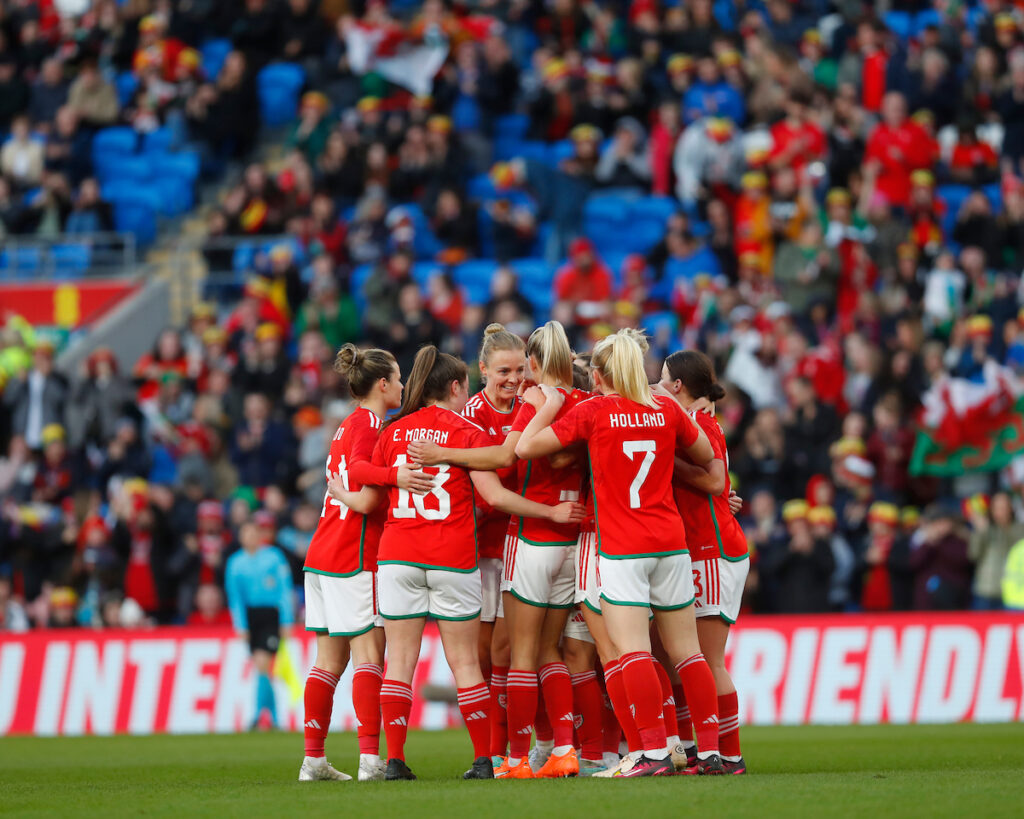
A new era for the women’s game across Europe begins on Tuesday, 2 May (12pm) when the draw for the inaugural edition of the UEFA Women’s Nations League takes place. Gemma Grainger’s Cymru will be in League A for the new tournament that will shape qualification for UEFA Women’s EURO 2025.
Following the success of the men’s competition that was launched in 2018, the format has now been expanded into the women’s game and 51 nations will be drawn across three leagues ahead of the opening games that will take place between September and December this year with the finals scheduled for February 2024. The two finalists will then join host nation France at the 2024 Olympic Games.
Promotion and relegation from the first edition of the competition will shape qualification for EURO 2025 as the league format is repeated for the European Qualifiers phase which will take place between the Spring and Autumn of 2024. A play-off for those nations missing out on automatic qualification will then take place to determine which remaining nations will compete at the finals that will take place in Switzerland in the summer of 2025.
Cymru are in Pot 4 in League A having narrowly missed out on qualification for the 2023 FIFA Women’s World Cup following their play-off defeat to Switzerland back in October. However, Grainger has targeted qualification for EURO 2025 since her appointment, and in July the squad will head to the United Stated to prepare for the inaugural Nations League campaign with a friendly international against the world champions in California.
“We got close to World Cup qualification but close isn’t good enough for us,” explained Grainger after extending her contract in January. “We’re ambitious, I’m ambitious, and we want to make sure that this team can fulfil their potential and qualify for that first major tournament. It’s about looking forward to the EURO qualifying campaign now and we don’t want to leave any stone unturned. Our ambition as a team and my ambition as a coach is that we continue to build on that momentum.
“My long-term plan and focus is here. The contract extension is great for me and it’s a sign that the players and staff here are right on track so that’s a real positive for us. My mind is completely focused on getting into one of the 16 places for the Euros. We’re currently ranked 21st in Europe so we know it’s a challenge but we believe we can do it. This group of players are passionate about representing their country, but we don’t underestimate how fine the margins are for qualifying.”
League A will comprise of four groups of four teams each, with the teams seeded into four pots according to the UEFA women’s national team coefficient rankings. The four group winners will progress to the first UEFA Women’s Nations League Finals in February 2024. Here are the four League A Pots:
Pot 1: England, Germany, France, Sweden.
Pot 2: Spain, Netherlands, Norway, Denmark.
Pot 3: Italy, Belgium, Austria, Iceland.
Pot 4: Switzerland, Cymru, Portugal, Scotland.
This new competition and extensive revamp of the qualification process for both UEFA Women’s EURO and FIFA Women’s World Cup is inline with the UEFA Women’s Football Strategy: Time for Action, and the changes come after extensive work by a competitions working group with representatives from different national associations and follows a recommendation of the UEFA Women’s Football Committee.
“I said this summer that we would continue to invest in women’s football, and we are,” said UEFA President Aleksander Čeferin on the launch of the new format last November. “Off the back of a historic UEFA Women’s EURO, it is now time to further develop women’s national team football. We have built an open, competitive, and continuous system in which every match will matter, a true reflection of the European sports model. I am convinced that this format will help all European national associations and keep the dream of qualifying for a major international tournament alive.”



















